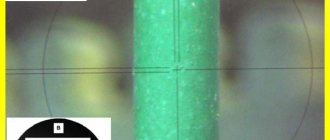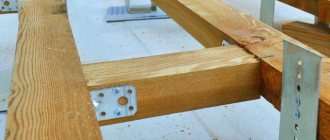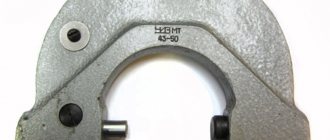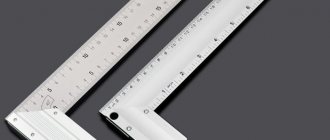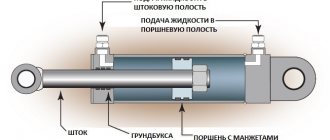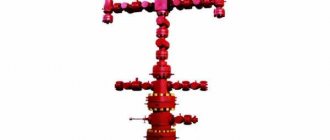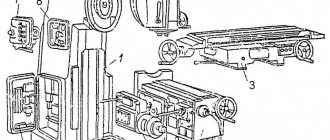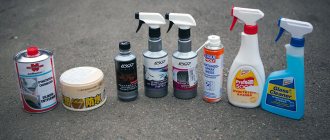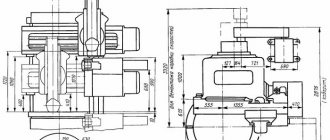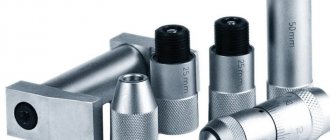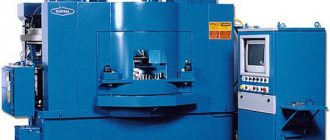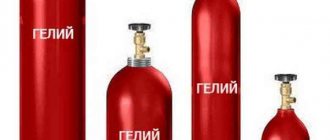What are perforation angles?
A perforated corner is a special device that acts as a frame for applying putty.
A solid base allows you to achieve ideal geometry in both horizontal and vertical planes. Among other things, a perforated corner for wall corners performs a protective and strengthening function. Fixed to the wall under wallpaper or another type of covering, this detail prevents premature destruction of the wall due to damage when carrying furniture, being hit by a heavy object, or frequent contact with the body of household members.
Material of manufacture
Currently, manufacturers produce many modifications of corners for wall putty. The purpose of the perforated corners for putty is determined by the base material and the shape of the product. Various materials are used as raw materials for their manufacture, each of which has a unique set of characteristics.
Among the main advantages of aluminum corners for putty are long service life, mechanical strength, and environmental friendliness.
The advantage of such products is considered to be low cost, and also, due to the synthetic base, resistance to rotting and chemical attack. Their light weight greatly simplifies finishing work.
Due to the zinc coating, steel parts last for ten years. They are resistant to corrosion, are not afraid of moisture and temperature fluctuations.
- Aluminum.
Among the main advantages of aluminum corners for putty are long service life, mechanical strength, and environmental friendliness. - PVC.
The advantage of such products is considered to be low cost, and also, due to the synthetic base, resistance to rotting and chemical attack. Their light weight greatly simplifies finishing work. - Cink Steel.
Due to the zinc coating, steel parts last for ten years. They are resistant to corrosion, are not afraid of moisture and temperature fluctuations.
Purpose of perforated corners
What are perforation angles?
A perforated corner is a special device that acts as a frame for applying putty.
A solid base allows you to achieve ideal geometry in both horizontal and vertical planes. Among other things, a perforated corner for wall corners performs a protective and strengthening function. Fixed to the wall under wallpaper or another type of covering, this detail prevents premature destruction of the wall due to damage when carrying furniture, being hit by a heavy object, or frequent contact with the body of household members.
Material of manufacture
Currently, manufacturers produce many modifications of corners for wall putty. The purpose of the perforated corners for putty is determined by the base material and the shape of the product. Various materials are used as raw materials for their manufacture, each of which has a unique set of characteristics.
Among the main advantages of aluminum corners for putty are long service life, mechanical strength, and environmental friendliness.
The advantage of such products is considered to be low cost, and also, due to the synthetic base, resistance to rotting and chemical attack. Their light weight greatly simplifies finishing work.
Due to the zinc coating, steel parts last for ten years. They are resistant to corrosion, are not afraid of moisture and temperature fluctuations.
Among the main advantages of aluminum corners for putty are long service life, mechanical strength, and environmental friendliness.
The advantage of such products is considered to be low cost, and also, due to the synthetic base, resistance to rotting and chemical attack. Their light weight greatly simplifies finishing work.
Due to the zinc coating, steel parts last for ten years. They are resistant to corrosion, are not afraid of moisture and temperature fluctuations.
Configuration of perforation angles and their characteristics
Depending on the layout of the room, two types of perforated corners for putty are used for finishing walls:
Such devices are necessary when arranging curved structures and surfaces. Using such products, you can achieve clear edges when plastering arches, niches, two-level ceilings and all kinds of partitions. They favorably emphasize the elegance of the architectural form, hiding minor finishing defects, which especially often arise during DIY repairs.
- Arched.
- Direct.
Their purpose is to level and reinforce straight planes. They are also used when you need to hide joints that are not tightly adjacent to each other.
Preparation for installing corners for putty for wall reinforcement
Before fixing the part to the wall, it is necessary to pre-treat the surface. To do this, you need to clean it from dust and dirt particles using a degreaser.
If you plan to reinforce an area where wallpaper is already covered, you should remove the strip of covering before installing the element. To do this, attach the structures tightly to the corner, mark the lines with a pencil, and then carefully make cuts with a stationery knife. After this, apply a primer and then secure the part completely.
Corner configuration
- paper - sold in the form of masking tape, designed to form an internal or external corner with ideal geometry, more often used for plasterboard structures for finishing putty;
- metal – have increased rigidity, strength, and are used as protective elements in areas with frequent traffic;
- plastic - inexpensive and convenient options that allow you to change shape without losing quality;
- with PVC or metal mesh - used to provide additional adhesion to the wall and to level the adjacent area. They are used in facade work and when plastering insulation.
Tools for installing a perforated corner for puttying slopes
Installation accessories include:
- Bucket or other container for mixing the solution.
- Directly perforated parts.
- A set of spatulas, including an internal and external corner spatula.
- Stationery knife.
- Putty.
Installation of corner corners for walls under putty
Before installing the product, it is necessary to take measurements of the slope parameters. You can cut it using regular metal scissors.
There are two fastening techniques:
- using special clamps;
- to the solution.
The first method involves the use of special staples, small nails and screws. Although this installation seems simpler, its aesthetics are inferior to mortar installation. Among other things, there is a high risk of cracks and chips forming when screwing screws into the surface. Also, the corner can easily be damaged, bent or cracked when driving in hardware.
Installation on the solution is carried out in several stages:
- Leveling the surface and filling potholes.
- Preparation of a mortar based on gypsum or cement: these mixtures are characterized by the best adhesion and tight adhesion to the surface.
- Preparing a piece of the required length.
- Applying the mortar to the wall in a thin layer: if the layer of plaster is too thick, the corner may float, as a result of which the degree will fall off and the corner will turn out uneven.
- Fix the corner and remove excess mortar with a spatula.
- Puttying the voids between the part and the surface.
- Sanding uneven surfaces.
- Applying decorative finishing coating to walls.
Self-adhesive products are a special type of perforated corners. Their inner surface is represented by double-sided tape; after removing the protective film, you just need to lean the part against the wall and wait a few seconds. Such products are used mainly for complex structures, for example, arches made of durable plasterboard, boxes in the wall and others.
It is important to understand that putty corners differ from finishing corners. These products have different purposes and functions that should not be confused.
Configuration of perforation angles and their characteristics
Depending on the layout of the room, two types of perforated corners for putty are used for finishing walls:
Such devices are necessary when arranging curved structures and surfaces. Using such products, you can achieve clear edges when plastering arches, niches, two-level ceilings and all kinds of partitions. They favorably emphasize the elegance of the architectural form, hiding minor finishing defects, which especially often arise during DIY repairs.
- Arched.
- Direct.
Their purpose is to level and reinforce straight planes. They are also used when you need to hide joints that are not tightly adjacent to each other.
Types of corners and features of their use
The most common product options are:
Metal perforated corner
This type is a thin sample made of a profile with perforation and a rigid edge along the edge. There are basically 2 types of similar corners for drywall:
- straight;
- arched.
These representatives have many subspecies. The corners are not glued, they are practically “slung” onto the structure and secured with putty or gypsum plaster.
Straight perforated corner is used for processing the inside and outside of corners.
It is a V-shaped profile with many holes - perforations.
Options for metal perforated corner for drywall
Actually, with their help, a high-quality connection with the processed corners occurs, and the top, located at the internal corners - inside, and at the external corners - outside, is a guide for the spatula. Excess air also escapes through the holes. Straight perforated corners are made of plastic, aluminum, and galvanized. The latter is tougher than the others, and the wide one can generally be used as a plaster beacon.
Plastic corner
This sample is more resistant to moisture than the profile, but its resistance to mechanical damage is lower. Among the advantages are the low price and the absence of corrosion of the material. There is also a type of plastic corner, for example, AquaBead, which has special paper with glue applied in the inside. Putty is not required for fixing here; just moisten the adhesive surface with water and simply glue the corner to the desired place.
Arched
When installing a gypsum plasterboard arch in the opening, various finishing materials are used, such as plaster, wallpaper, panels and others. But in order to preserve the transition points between planes, an arched corner, which has great capabilities, is used. Arched corners are divided into the following types:
- Installed under plaster, perforated. They have separate petals on one side of the corner, allowing you to place a sufficient strip on any arched curve. There are plastic and profile ones;
- Decorative, which are glued to the plaster.
Preparation for installing corners for putty for wall reinforcement
Before fixing the part to the wall, it is necessary to pre-treat the surface. To do this, you need to clean it from dust and dirt particles using a degreaser.
If you plan to reinforce an area where wallpaper is already covered, you should remove the strip of covering before installing the element. To do this, attach the structures tightly to the corner, mark the lines with a pencil, and then carefully make cuts with a stationery knife. After this, apply a primer and then secure the part completely.
Corner configuration
- paper - sold in the form of masking tape, designed to form an internal or external corner with ideal geometry, more often used for plasterboard structures for finishing putty;
- metal – have increased rigidity, strength, and are used as protective elements in areas with frequent traffic;
- plastic - inexpensive and convenient options that allow you to change shape without losing quality;
- with PVC or metal mesh - used to provide additional adhesion to the wall and to level the adjacent area. They are used in facade work and when plastering insulation.
Perforated plaster corners
Perforated plaster corners are a special type of surface connection with various structures, indispensable in the process of plastering and puttying. Used for direct edging of protruding and corner elements, joints, slopes, niches, panels, partitions, etc. You can also buy perforated corners for putty to protect corners from mechanical stress and correct unevenness at joints.
A plaster corner is a profile whose sides are angled and have many holes. Perforation improves the quality of adhesion to the surface when using plaster. Installation of perforated corners is quick and simple and does not require additional tools or skills.
Characteristics and types of plaster corners in the catalog
According to the material of manufacture:
- Aluminum is an environmentally friendly material. Aluminum corners are strong, can withstand strong mechanical stress, and are durable.
- PVC - used for indoor work. They do not corrode and are highly resistant to moisture. Easily cut with a utility knife.
- For walls - designed to level and protect protruding edges.
- For windows and slopes, adjacent profiles are used that neatly frame window and door openings, protecting the joints from cracks and chips.
- For external ones, the corner of the profile protrudes above the sides, which conveniently limits the application of plaster with a spatula.
- For internal ones - used to emphasize the corner connection of the edging.
In the catalog of the online store 7745.by you can buy aluminum and PVC plaster corners for finishing internal and external corners.
Selection criteria and tips
- Plaster profiles have different sizes. The length of the profiles varies from 2.4 to 3 m (if necessary, the corner can be easily cut), and the width can be 18.5, 23, 25 mm. In our catalog you can purchase perforated corners at a good price in various sizes: 23x23, 18.5x18.5, 25x25.
- The use of a perforated corner with a plaster mesh is necessary in places where strong mechanical stress is possible. This design strengthens the corner and increases the adhesion force to the surface. There are 2 types of mesh:
- Reinforcing – protects the plaster layer from destruction and cracking.
- For wet plaster – for carrying out wet plastering work.
- A flexible (arched) perforated plaster corner is designed for the installation of curved corners, arches, shaped structures, multi-level surfaces. The flexibility of the profile is ensured by the side with cut perforations, which allows the corner to bend around surfaces with any bend.
In the online store 7745.by you can buy perforated plaster corners with and without mesh in different lengths, heights, widths. You can also find window profiles in our catalog.
